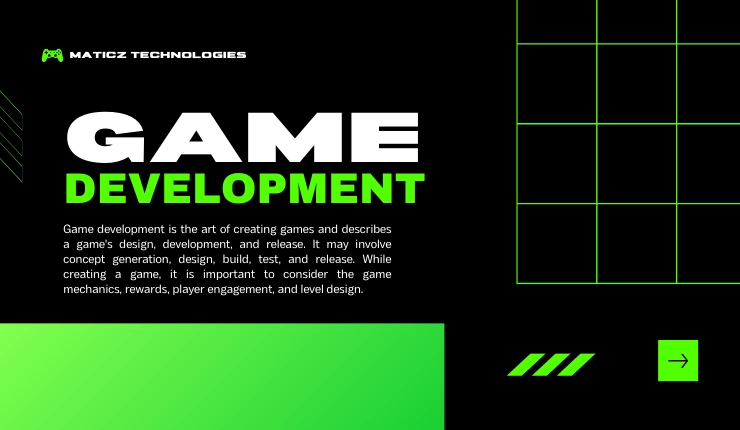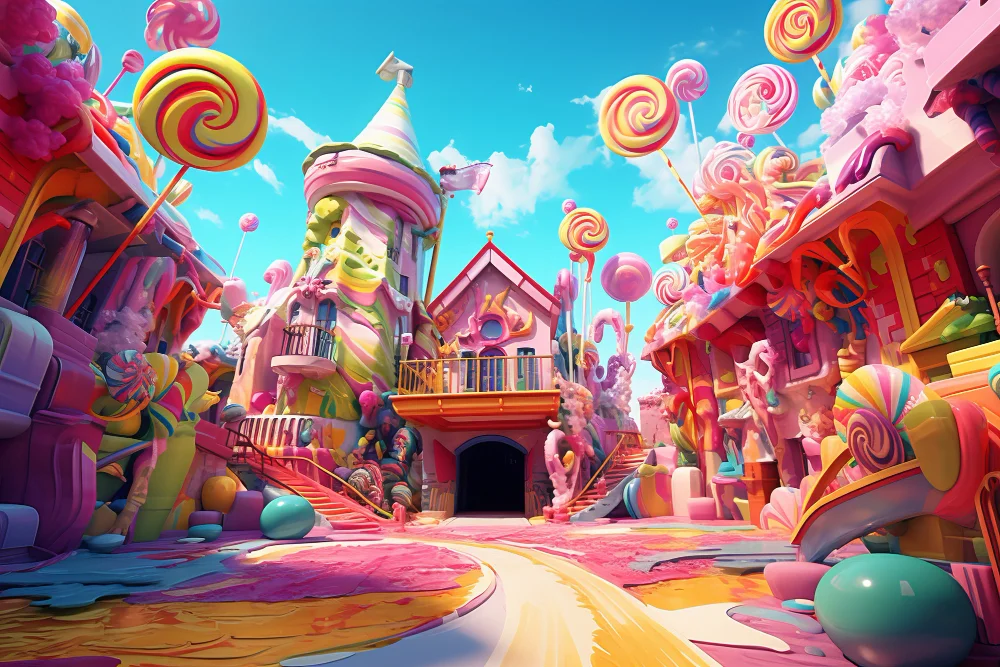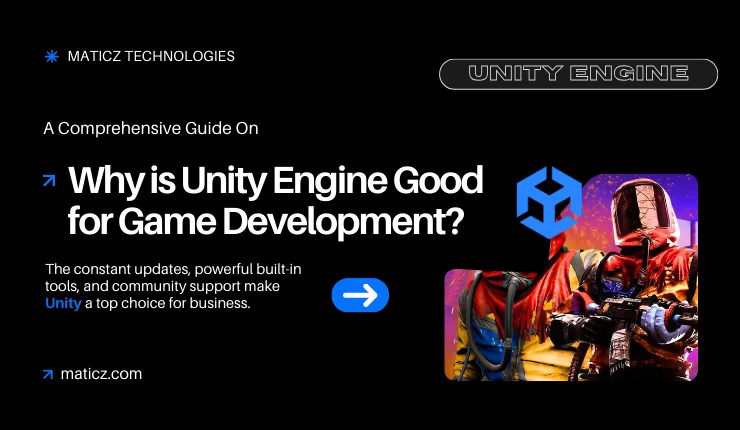Share Posts

The Ultimate Guide to Game Development in 2025
63
3278
103
The gaming industry has grown exponentially and it has become a great investing option globally. Game development is more than just creating a product; it’s all about refining the immersive experience of millions of players all around the world. Having a solid understanding of game development helps you to drive the possible opportunities in this thriving sector. Whether you are a developer or stakeholder, understanding these steps will help you handle the process and create memorable gaming experiences. In this detailed guide, you will learn about the steps involved in creating a successful game.
What is Game Development?
Game development is the fascinating skill of creating virtual worlds with a touch of imagination and code. It is the process of conceptualization when innovative ideas grow into structured plans. The process includes design and programming when developers define gameplay techniques and visual aspects. By using powerful game engines, Developer teams or solo creators breathe life into visions.
Game Development is the art of creating films, music, and storytelling combined with technology. Through regular testing and polishing, it is guaranteed that the game is truly immersive. From indie gems to blockbusters, video game development involves both creativity and technical ability, and it is a stage that is changing constantly with every project.
Step-Step Process of Game Development
Game development is a vast sector that requires careful planning to achieve success in this competitive gaming industry, a streamlined approach is compulsory from designing to launching the game. Let's see our game development approach.
Understanding The Basics
To build successful games, begin by understanding the foundational elements of game development. This includes key concepts such as mechanics, storyboarding, and game loops. Having a solid understanding of these basics helps to lay a strong foundation for game development.
Key Concepts In Game Development
Game Mechanics
Game mechanics are the rules and development that define how a game operates and how players interact with it. For an immersive gameplay experience, game mechanics act as the backbone thereby dictating everything from movement and actions to combat and progressions. Game mechanics must be carefully balanced and designed in order to get a smooth gameplay.
Storyboarding
Storyboarding is especially for narrative-driven games. This involves activities such as creating visual representations for the game’s story, illustration of key scenes, character interactions, and play points. This process greatly helps developers visualize the narrative flow and also makes sure that the storyline remains graspable and engaging.
GamePlay Loops
Gameplay loops are the repetitive cycle of actions that helps the players keep engaged throughout the game. A well-crafted gameplay will provide a balance between challenge, reward, and progression to keep players committed to the game.
Popular Game Genres
Game genres influence how players engage with the characters, narratives, and game world. Different game genres create different moods, environments, and perspectives that enrich the gameplay experience. Here are some examples.
Action Games
Action games cover the ability to play quickly. This requires quick reflexes and eye-hand coordination. Players often engage in battles, obstacles, and intense missions.
Stimulation Games
Stimulation games are intended to simulate real-world activities with the highest possible accuracy. These games are ready to provide players with extraordinary experiences in ordinary settings.
Adventure Games
Adventure games focus on storytelling, exploration, and radical problem-solving. Players embark on epic quests, discover secrets, and integrate into a rich story world.
Board Games
These digital versions of traditional board games bring classic fun to the screen. Popular names include chess, checkers, and various strategy games.
Role Play Games
In RPG games, players take on the role of a character in a hypothetical situation. They develop their characters through missions, battles, and decisions to create the game's story.
Video Games
It is a broad category that covers all electronic games played on consoles, PCs, or mobile devices. There are a variety of game types. From simple games to complex simulation games.
Battle Royale Game
This genre pits players against each other to compete for the last player in the competition. Players must acquire weapons, equipment, and resources as they explore increasingly smaller play areas.
Game Planning
To make the gaming project successful, effective game planning is a must-concentrated step. This includes focusing on ideation and concept development, game design documentation, and defining the target audience. This phase lays the groundwork for all upcoming development stages.
Ideation and Concept Development
Compelling game ideas is one of the most exciting steps in game development. Using techniques like mind mapping, brainstorming sessions, game jams, inspiration from other media, and player feedback helps to come up with unique ideas that set the game apart from its competitors. From these ideas develop possible concepts by defining core mechanics, creating a high-level story, prototyping key features, evaluating the scope, and gathering feedback.
Game Design Document
A Game Design Document (GDD) serves as a blueprint for the team thereby covering all the aspects of the game’s lifecycle in detail. A well-drafted GDD would consist of the game’s overview, story & characters, gameplay mechanics, level design, visual design, technical specifications, marketing & monetization strategies, and development timeline.
Defining Your Target Audience
On knowing the target audience, we can tailor the game features and thus drive the way for the game’s success. By performing market analysis and surveys, we can able to analyze the audience behavior and the latest trends. Following this, utilizing analytical tools, social media, and forums also helps us to get a detailed overview of the lucrative gaming community. According to these insights, we can customize our gaming solutions and quickly grasp the potential opportunities in this sector.
Game Tools and Technologies
Utilizing the right tools and technologies can refine the development and also enhance the quality of the game. This includes focusing on categories like game engines, graphic tools, and programming languages according to the game’s scope and objectives.
Game Engines
Game engines are software frameworks that help to create and develop games by providing essential tools and functionalities. Each game engine has its own advantages and disadvantages. So choose wisely according to project scope and requirements. Here is an overview of some of the popular game engines.
| Game Engine | Advantages | Disadvantages |
| Unity | > Easy to use > Good for both 2D & 3D games > Large Community > Extensive asset store | > Costly for professionals > Frequent updates can be confusing |
| Unreal Engine | > High-end graphics > Efficient > Large marketplace > Blueprint system for non-programmers | > Not suitable for simple projects > It requires powerful hardware |
| Godot | > Free and open-source > Unique architecture > Supports multiple languages | > Custom language may be off-putting > Lack of resources compared to unity |
| Phaser | > Great for browser games > Stable > Easily expandable | > Primarily for 2D games > More limited than other engines |
| GameMaker | > User-friendly > Large platform support > Drag and drop programming | > Primarily for 2D games > Not free |
Graphic Tools
Graphic tools are software programs used by artists and designers to create, edit, and manipulate visual content. Each graphic tool has its own pros and cons. So choose wisely according to project scope and requirements. Here is an overview of some of the popular game engines.
| Graphic Tool | Pros | Cons |
| Adobe Photoshop | > Industry-standard > Powerful features for photo editing and creating textures | > Subscription-based > Slightly complex for beginners |
| Adobe Illustrator | > Excellent for creating vector graphics > Easy scaling | > Subscription-based > Higher learning curve |
| Blender | > Free and open-source > All-in-one tool for 3D modeling and animation | > Steeper learning curve > Less intuitive interface |
| Inkspace | > Free and open-source > Great for creating user interfaces and icons | > Limited 3D capabilities > Fewer advanced features compared to Adobe tools |
| GIMP | > Free and open-source > Versatile photo editing tool | > Less polished interface > Fewer advanced features compared to Photoshop tools |
Coding Languages and Frameworks
In video game development, coding languages and frameworks are very important because they provide the foundation to build and run games. Here are some popular coding languages and frameworks used in the gaming industry.
| Programming Language | Description |
| C++ | > Widely used for game development due to its high performance and efficiency. > Commonly used with game engines like Unreal Engine. > Offers fine control over system resources and memory management, which is vital for high-performance games. |
| C# | > Popular in game development, especially with Unity. > Known for its simplicity and ease of use, making it a great choice for beginners. > Provides powerful features for developing both 2D and 3D games. |
| Klotin | > Used for Android game development. > Fully interoperable with Java, allowing seamless integration with existing codebases. > Known for its modern syntax and safety features. |
| Swift | > Used for iOS game development. > Known for its modern and powerful features, making it easy to write safe and fast code. > Provides great performance and efficiency for iOS applications. |
| Javascript | > Used for web-based games. > Frameworks like Phaser enable the development of 2D games that run directly in the browser. |
Building The Game
Building the game is the phase where the game’s vision is brought to life. This phase includes important activities such as prototyping, level design, asset creation, and sound & music implementation. This phase is completely iterative so that every game feature is meticulously developed until it satisfies the client's needs and requirements.
Prototyping and Testing
Prototyping is considered an important step because it allows developers to test and fine-tune the game ideas quickly. Creating a simple functional version of the game, helps us to validate the crucial game mechanics and whether they are fun and engaging before actually investing significant time and resources into full development. Prototyping also helps to identify potential issues early, thereby saving developers time and effort.
Level Design and Asset Creation
In this stage, the game development studio would curate different immersive levels alongside challenges, and rewards are also created to keep the players engaged throughout the gameplay. Then according to the game’s theme and style, assets such as characters, props, and environment are designed, thus making the user interface more interactive.
Implementing Sound and Music
Sound and music are the critical component that enhances the overall game experience. Implementing perfect sound and music would immerse the player, elevating the emotional impact and overall engagement.
Testing and Optimization
Testing and optimization are necessary to deliver an efficient and bug-free game. This phase includes activities such as debugging, user testing, and performance tuning to ensure a seamless user experience across all platforms.
Debugging
It helps to identify and resolve bugs, glitches, and errors thereby offering users extraordinary gameplay without any disturbance. Utilizing debugging tools and automated testing frameworks such as profilers, log files, and an integrated development environment (IDE) provides some powerful debugging features that help to identify and track the bottlenecks and optimize code.
User Testing and Feedback Loops
This involves real users in testing to collect insights on usability, difficulty, and overall experience and make sure to launch a user-friendly game in the market. Implementing iterative feedback loops also helps to improve the game based on user suggestions.
Performance Optimization Techniques
For smoother gameplay on all platforms, consider reducing load times, enhancing frame rates, and optimizing memory usage. Also, test the game on various hardware to ensure its compatibility and performance consistency.
Launching Your Game
Launching is the crucial phase, where effective market strategies and platform selection play a major role and thus directly create a significant impact on the game’s visibility as well as profitability.
Marketing and Promotion Strategies
Effective marketing strategies are crucial for a successful game launch. Develop a marketing plan that includes teasers, gameplay demos, and social media engagement. Also, consider partnering with influencers, streamers, and gaming communities to boost visibility and credibility.
Choosing Platform
Selecting platforms like PC, consoles, or mobile based on the game’s audience and technical requirements would help to reach the target user base easily. Also, consider cross-platform support to reach a broader player base.
Monetization Opportunities
Having a broad idea of different monetization models would considerably increase the game’s revenue.
Premium
In the premium model, players pay a one-time fee to purchase the game and thus generate straightforward and immediate revenue.
Pros
> Predictable revenue
> No in-game ads
Cons
> Requires a strong initial marketing push
> Limited post-purchase revenue.
In-game Purchases
In this model, players would buy virtual items, upgrades, or content within the game.
Pros
> Continuous revenue stream
> Encourages long-term engagement
> Allows for free-to-play entry
Cons
> It can be perceived negatively if not implemented fairly.
Post-Launch Maintenance
Game development doesn't end after launching the game, it’s just a start in the thriving marketplace. Continuous updates, Regular maintenance, active community engagement, and support intended to attract new players attract players as well as retain old players.
Maintenance and Update
To ensure the longevity and success of the game, post-launch maintenance plays an important role. Maintenance and Updates would majorly concentrate on bug fixes, content updates, and improving security elements. By prioritizing maintenance & updates, developers can create dynamic and evolving games, thereby retaining the players for a long time.
Community Engagement and Support
Implementing effective strategies such as events, contests, feedback sessions, and open communication channels can assure us of a strong player community, which is important for a game to withstand the saturated gaming ecosystem. A strong community also fosters a sense of loyalty, thereby encouraging players to stay engaged with the game and promote it to others.
The Game Development Team
There must be a skilled and collaborative team, behind every great game. Knowledge about the roles and responsibilities of the development team can enhance productivity and also make sure that the project stays on track.
Game Designer
The game designer's job is to come up with development specifications, set up all the game's rules and mechanics, and design game levels and challenges as well. They work with other team members to realize the concept of the game.
Programmer
Programmers' responsibilities are making code based on the rules of the gameplay, creating the game system, and AI, and activities like performance optimization, debugging, and fixing. They are also involved in interaction with designers and artists for proper integration of the assets.
Artist
Artists are responsible for creating 2D and 3D assets that are designed and developed and for their concept art and storyboards designed. They also ensure visual consistency and style. They come across fellow artists and animators who also contribute to the game’s visual appeal.
Sound Engineer
Sound Engineers compose music, record, and edit sound effects, and integrate audio into the game. They ensure audio quality and consistency and collaborate with designers to enhance the game’s atmosphere.
Project Manager
Project Managers organize and schedule tasks, lead group activities, and take care of resources and budgeting. They also trace the measure of success by keeping an eye on the schedule. In addition, they find ways to hit the rising problems and risks encountered by the remnant of the game.
QA Tester
QA Testers review the game's functionalities and features, shape their findings about the problems, put them through in practice with a developer, and provide their point of view on the problems. They also make sure that the quality principles are fulfilled and the game operation is stable.
Conclusion
Game Development is a challenging task that involves creativity, technical expertise, and collaboration. Understanding the above steps and implementing them, is the best way to build an interactive and dynamic game that draws the attention of players all around the world. If you are a developer or a stakeholder, this guide is an essential tool that would help you to succeed in game development.
Do you have any new ideas for game development? We are here to turn your gaming vision into reality. From simple mobile games to complex AAA games, Maticz is a premier game development company that delivers innovative solutions. We understand the complexities of game development and are also passionate about creating unique solutions that attract gamblers all around the world. Ready to be a part of the lucrative gaming industry? Collaborate with us and take your vision to the next level. Contact us today!
Tap Into the Future
The latest insights, posts, and project updates - straight to your inbox.




